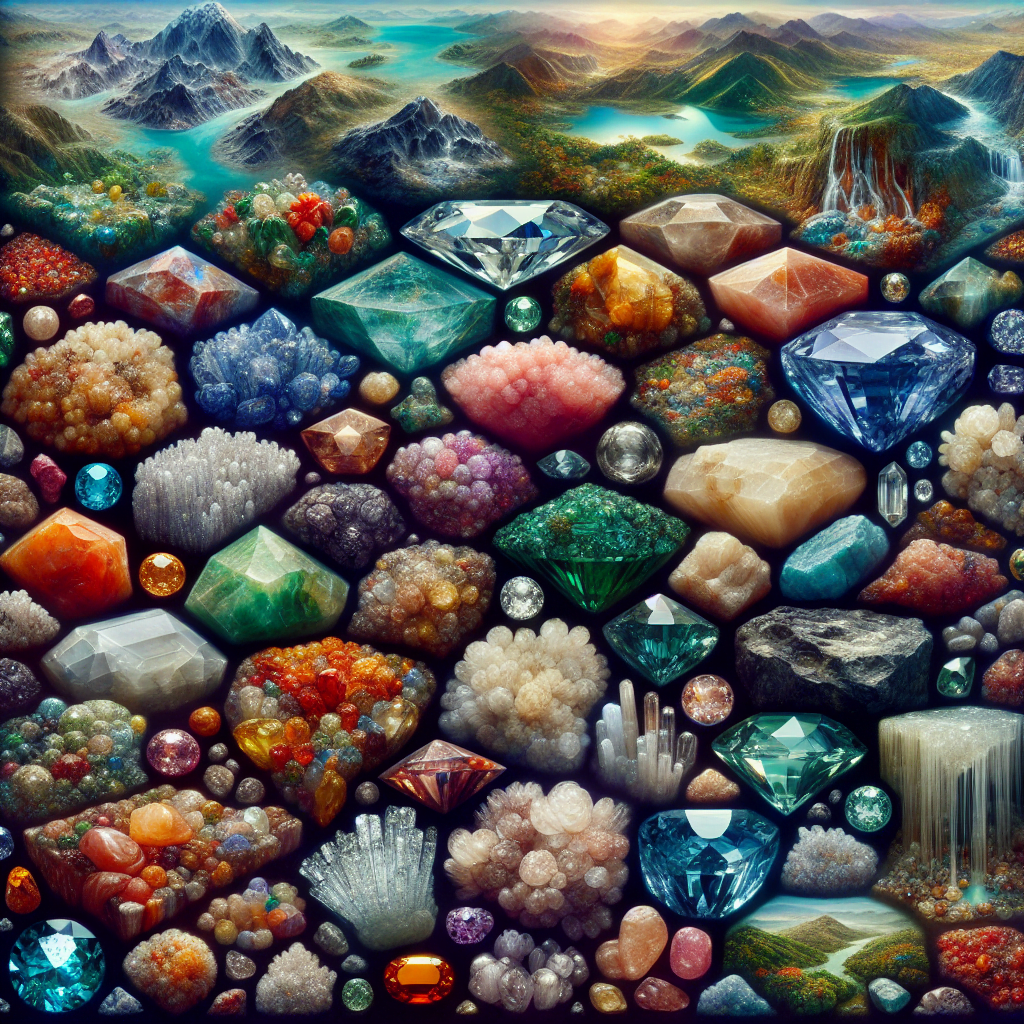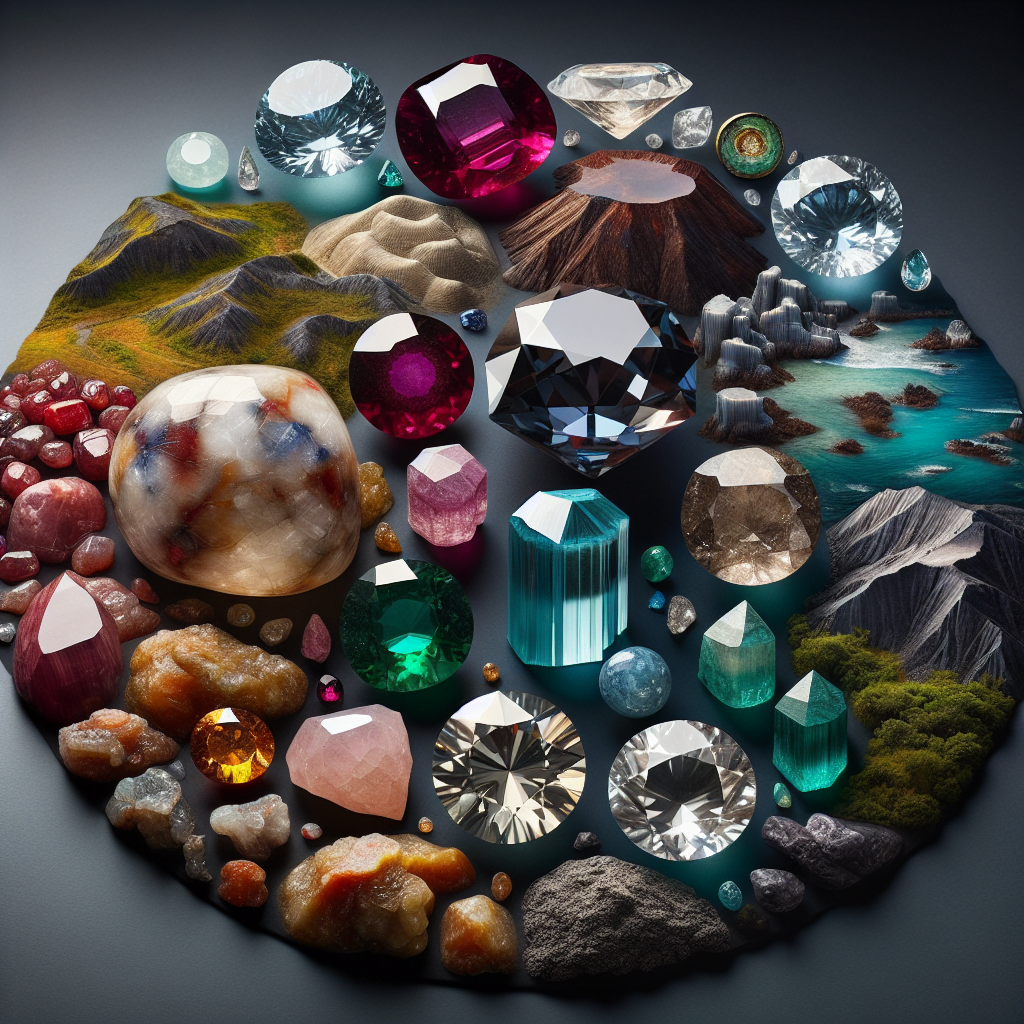What Is Rarest Than Gold?
What Is Rarest Than Gold? In “What Is Rarest Than Gold?”, we draw curiosity to the marvels concealed within the Earth’s crust and beyond. The piece explores elements and substances that are less abundant and dramatically more precious than gold. Expect to uncover a treasure trove of information about fascinating materials like platinum, rhodium, and even objects from outer space. You are about to embark on a journey to the mysterious realms, filled with rarities that will surely ignite your interest and spark your intrigue. Enjoy your read and discover what truly lies beyond the golden sheen.

Understanding Rarity
Rarity is a fascinating concept that intrigues everyone. It’s the state of being uncommon, unusual, or infrequent – attributes that often lure us into wanting to know more, own, or experience these rarities. The notion of rarity encompasses a wide variety of elements – from precious metals to astrophysical objects, biological beings, and phenomena. To thoroughly understand rarity, let’s break it down into various aspects.
Rarity Overview
Usually, an item, event, or entity is considered rare when it’s seldom found or occurs infrequently. The idea of rarity elevates the object’s perception as it’s rather unusual or exceptional. This perception adds to the excitement or interest surrounding the object, and people are often attracted to owning or experiencing these rarities, primarily due to their scarcity and often, their unique features as well.
Factors Influencing Rarity
Numerous factors influence the rarity of an item. For instance, in terms of materials, geological availability plays a significant role. Some substances are rare because they exist in limited quantities on Earth. Similarly, in the context of events, certain phenomena are considered rare because of their infrequent occurrence due to the specific alignment of circumstances needed for their occurrence.
Rarity Compared to Gold
As a standard of comparison, gold is often used to represent rarity. It is a precious metal, relatively scarce on Earth, and holds a high cultural and financial value. However, being rare isn’t equal to being gold-like in respect to value. Several things are rarer than gold, but they may not necessarily match its worth. Let’s delve deeper into a few such things and explore them all in their rarity.
Precious Metals Rarer Than Gold
Not all that glitters is gold, and there are precious metals out there that glitter brighter due to their rarity. What Gem Is Worth More Than Gold?
Palladium
One such metal is Palladium which is found in only a few locations worldwide. Its high melting point and distinct catalytic properties make it handy in industrial applications, thereby increasing its demand.
Rhodium
Rhodium is another metal which is rarer than gold. Mostly used in catalytic converters and jewelry, Rhodium’s rarity comes from its little presence in the Earth’s crust and the complex process required to extract it.
Platinum
Naturally white and incredibly dense, platinum is a highly sought-after metal due to its resistance to tarnish and damage. Although often associated with jewelry, a significant amount of platinum is used in catalytic converters, dental work, and even aircraft turbines.
Ruthenium
Found in ores with other platinum metals, Ruthenium is highly rare. This hard, white metal is most commonly used in electronics and the chemical industry. https://www.aigsthailand.com/
Osmium
Being the densest naturally occurring element, Osmium has a unique bluish-silver color. It’s mostly used in fountain pen tips, electrical contacts, and in other applications where extreme hardness is required.
Iridium
Extremely corrosion-resistant, Iridium is the most extreme member of the platinum group. It’s a precious metal that’s used in a number of industrial applications due to its high melting point and hardness.
Gemstones Rarer Than Gold
While gold undoubtedly has its charm, there are several gemstones in nature that put gold’s rarity to shame.
Blue Garnet
Blue Garnets are some of the rarest gemstones on this planet. They are known for their remarkable color change under different light.
Jadeite
The most expensive type of jade, Jadeite, is incredibly rare. It’s recognized for its intense green color and is often used in high-quality jewelry.
Pink Star Diamond
Pink Star Diamond holds the title of being one of the rarest gems. This 59.6-carat diamond is prized for its perfect color and astounding size.
Grandidierite
Found originally in Madagascar, Grandidierite is among the rarest minerals. The incredibly clear blue-green stone has found its application in various high-end jewelry pieces.
Serendibite
Serendibite, a cyan colored gem, is rarely seen outside of mineral collections. Known instances of the gemstone being available for buying are scarce and often associated with exorbitant prices.
Painite
Once recognized as the rarest mineral in the world, Painite could only be found in Myanmar by the late 1950s. Larger crystals suitable for jewelry have recently been found, making it marginally less elusive.
Rare Elements on Earth
Earth’s crust comprises diversified elements, some of which are incredibly rare.
Astatine
Astatine is the rarest naturally occurring element on Earth, with less than an ounce existing at any given time in the Earth’s crust.
Francium
Francium is another rare element that exhibits interesting characteristics. This radioactive metal is dangerously unstable and continues to be a subject of interest for nuclear scientists.
Polonium
The rare and radioactive element Polonium was discovered by Marie Curie, named after her homeland, Poland. It’s used as a power source in spacecraft due to its ability to generate abundant heat energy.
Berelium
Berelium is a rare and highly toxic chemical element. It has a limited number of applications, mainly due to its toxicity, including as a neutron reflector/moderator in nuclear reactors.
Technetium
Technetium is the lightest radioactive element and does not happen naturally on Earth. It needs to be manufactured, making it relatively rare.
Promethium
Promethium, with no stable isotopes, is a rare earth element used mainly in luminous paints and nuclear batteries.

Astrophysical Objects Rarer Than Gold
As we move out of Earth, the universe offers a spectacle of rare and magnetic entities.
Neutron Stars
Neutron stars are remnants of supernovae. Though they are no bigger than a city, they possess the mass of several Suns. Their extreme density and powerful magnetic fields make them one of the most fascinating objects in the cosmos.
Black Holes
A result of a collapsed star, Black Holes have gravity so strong that nothing can escape it, not even light. Their existence and nature continue to be one of the biggest mysteries in space science.
Quasars
Being among the brightest objects in the universe, Quasars are incredibly distant celestial bodies emitting an enormous amount of energy. Their rarity and luminosity make them valuable tools for scientists studying the ancient universe.
Pulsars
Pulsars are rare celestial objects that emit regular surges of radio waves and other electromagnetic radiation at rates up to one thousand pulses per second. Their extreme conditions provide a unique laboratory for studying the laws of physics.
White Dwarfs
White dwarfs are the last evolutionary stage of stars that aren’t massive enough to become neutron stars or black holes. These dense remnants are typically about the size of Earth, yet they contain the mass of the Sun.
Rare Biological Entities
Life on Earth presents its longstanding rarity ranging from the animal kingdom to plant life and intricate ecosystems.
Endangered Species
Several animal species are so rare that they are on the brink of extinction. This includes creatures like the Vaquita, an extremely rare species of porpoise, and the Javan Rhino, which is the most threatened of the five rhino species, with only 58-68 individuals remaining.
Unique Ecosystems
Certain ecosystems on Earth are truly rare due to their unique combinations of flora and fauna. For example, the Amazon Rainforest is the largest and most biodiverse tract of tropical rainforest in the world.
Rare Plants and Fungi
Many plants and fungi are also incredibly rare, some being known from only a single specimen or location. The Ghost Orchid, for instance, is one of the rarest and most coveted wildflowers in North America.
Genetic Mutations
In the realm of genetics, certain mutations are incredibly rare. These unique gene variants can lead to astonishing phenomena, such as the tetrachromacy in humans, enabling them to see a hundred times more colors than the average person.

Rare Events and Phenomena
Mother Earth and the Universe pair up to present some of the rarest occurrences that awe-inspire us.
Supernovas
A supernova is a stellar explosion that outshines an entire galaxy. These rare cosmic events occur approximately once every 50 years in a galaxy the size of the Milky Way.
Solar Eclipses
Solar Eclipses are a natural spectacle and a somewhat rare occurrence. Although they occur somewhere on Earth about once every 18 months, an individual location experiences this phenomenon roughly every 375 years.
Auroras
Auroras or polar lights are ethereal natural light displays in the Earth’s sky. While they are a common occurrence at high northern or southern latitudes, seeing them elsewhere can be extremely rare.
Natural Disasters
Certain natural disasters, such as supervolcanic eruptions or meteor impacts, are remarkably rare due to the massive scale and specific conditions required for their occurrence, but have the potential to cause globally significant impacts.
Antiques and Artifacts Rarer than Gold
Ancient remnants possess a rarity derived from their historical significance.
Ancient Artifacts
Ancient artifacts, from the earliest tools of cavemen to historic relics, are incredibly rare due to their age, condition, and historical importance.
Historical Documents
Certain historical documents, like original copies of the U.S. Constitution or the Magna Carta, hold extreme rarity owing to their crucial role in shaping global human history.
Unique Artworks
Unique artworks, such as the Mona Lisa or Starry Night, are one-of-a-kind pieces that hold immense rarity due to their artistic brilliance and the innovative minds behind their creation.
Rare Stamps and Coins
Certain postal stamps and coins are treasured rarities owing to their age, their limited number, and the unique stories each stamp or coin carries. The British Guiana 1c Magenta, for example, is the rarest and most valuable stamp in the world.

The Value of Rarity
While it’s thrilling to learn about the various things rarer than gold, the intrigue factor naturally trickles into its perceived value.
Rarity Vs. Value
Being rare doesn’t necessarily mean being valuable. The “value” of something is incredibly subjective, depending on factors such as demand, usefulness, or societal importance. While a rare metal may not have much market value, a rare painting could fetch millions at auction.
Why Do We Value What Is Rare?
The perceived value of rarity often stems from a basic human desire to own something unique. From an economic standpoint, an item’s rarity can increase its demand, thereby raising its value. There’s also a certain symbolic prestige associated with owning something rare, which can add to its appeal and desirability.
The Economics of Rarity
The economics of rarity often works on the principle of scarcity – the rarer an item, the more valuable it becomes, considering there’s a demand for it. A rare item’s price may become inflated due to its limited supply and high demand, making it a valuable commodity in the market.
Preserving Rare Entities
Preserving these instances of rarity is vital for scientific research, maintaining biodiversity, and preserving our cultural heritage.
Conservation Efforts
Numerous conservation programs worldwide aim to protect and conserve rare species, ecosystems, and historical artifacts. These initiatives involve habitat preservation, captive breeding programs, and legal protection against hunting or trade.
Laws and Regulations
Several laws and regulations are designed to protect rare entities. For instance, endangered species are often protected by laws that prohibit hunting, capture, and trade of the species.
The Role of Science in Preservation
Science plays a crucial role in the preservation of rare items. Techniques like cryopreservation are used to preserve the genetical material of rare species, while advanced archeological methods are used to preserve and study rare artifacts.
Rarity indeed has a vast scope spanning across the Earth and beyond, encompassing living beings, non-living objects, celestial bodies, and phenomena. Understanding and preserving these rarities not only satisfies our curiosity but also presents an opportunity to appreciate the untold beauty and diversity of our universe.
